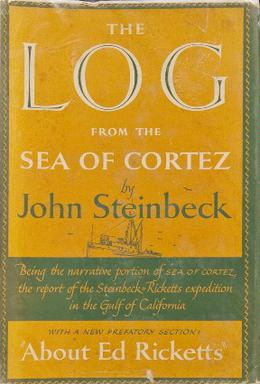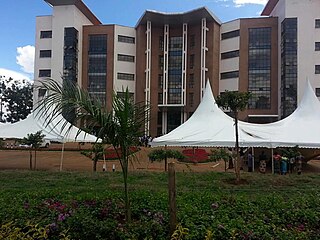Related Research Articles

The Crossing of the Red Sea or Parting of the Red Sea is an episode in the origin myth of The Exodus in the Hebrew Bible.

Rennell and Bellona is one of the nine provinces of Solomon Islands, comprising two inhabited atolls, Rennell and Bellona, or Mu Ngava and Mu Ngiki respectively in Rennellese, as well as the uninhabited Indispensable Reef. Rennell and Bellona are both Polynesian-inhabited islands within the predominantly Melanesian Solomons. They are thus considered Polynesian outliers. The first known European to sight the islands was Mathew Boyd of Camberwell, London, commander of the merchant ship, Bellona, in 1793. The province has a combined population of 3,041, the least populous province of Solomon Islands. The Samoic language of the islands is, in English texts, called Rennellese. The province's capital is Tigoa, on Rennell Island.

The Chagga are a Bantu ethnic group from Kilimanjaro Region of Tanzania. They are the third-largest ethnic group in Tanzania. They historically lived in sovereign Chagga states on the slopes of Mount Kilimanjaro in both Kilimanjaro Region and eastern Arusha Region.
Yam was a god representing the sea and other sources of water worshiped in various locations on the eastern Mediterranean coast, as well as further inland in modern Syria. He is best known from the Ugaritic texts. While he was a minor deity in Ugaritic religion, he is nonetheless attested as a recipient of offerings, and a number of theophoric names invoking him have been identified. He also played a role in Ugaritic mythology. In the Baal Cycle he is portrayed as an enemy of the weather god, Baal. Their struggle revolves around attaining the rank of the king of the gods. The narrative portrays Yam as the candidate favored by the senior god El, though ultimately it is Baal who emerges victorious. Yam nonetheless continues to be referenced through the story after his defeat. In texts from other archaeological sites in Syria, attestations of Yam are largely limited to theophoric names. In Emar he was among the many deities venerated during a local festival, zukru, which took place once every seven years.
The Yaaku are a people who are said to have lived in regions of southern Ethiopia and central Kenya, possibly through to the 18th century. The language they spoke is today called Yaakunte. The Yaaku assimilated a hunter-gathering population, whom they called Mukogodo, when they first settled in their place of origin and the Mukogodo adopted the Yaakunte language. However, the Yaaku were later assimilated by a food producing population and they lost their way of life. The Yaakunte language was kept alive for sometime by the Mukogodo who maintained their own hunter-gathering way of life, but they were later immersed in Maasai culture and adopted the Maa language and way of life. The Yaakunte language is today facing extinction but is undergoing a revival movement. In the present time, the terms Yaaku and Mukogodo, are used to refer to a population living in Mukogodo forest west of Mount Kenya.

The Meru or Amîîrú are a Bantu ethnic group that inhabit the Meru region of Kenya. The region is situated on the fertile lands of the north and eastern slopes of Mount Kenya in the former Eastern Province.
The Agumba people were an ethnic group who inhabited the forests of Mount Kenya, but are now either extinct or assimilated.
Kurahaupō was one of the great ocean-going, voyaging canoes that was used in the migrations that settled New Zealand in Māori tradition.

Yam Island, called Yama or Iama in the Kulkalgau Ya language or Turtle-backed Island in English, is an island of the Bourke Isles group of the Torres Strait Islands, located in the Tancred Passage of the Torres Strait in Queensland, Australia. The island is situated approximately 100 kilometres (62 mi) northeast of Thursday Island and measures about 2 square kilometres (0.77 sq mi). The island is an official locality known as Iama Island within the local government area of Torres Strait Island Region. The town, also called Yam Island, is located on the north-west coast of the island. In the 2021 census, Iama Island had a population of 275 people.

The Log from the Sea of Cortez is an English-language book written by American author John Steinbeck and published in 1951. It details a six-week marine specimen-collecting boat expedition he made in 1940 at various sites in the Gulf of California, with his friend, the marine biologist Ed Ricketts. It is regarded as one of Steinbeck's most important works of non-fiction chiefly because of the involvement of Ricketts, who shaped Steinbeck's thinking and provided the prototype for many of the pivotal characters in his fiction, and the insights it gives into the philosophies of the two men.
The Rwa or Meru sometimes Rwo are a Bantu ethnic and linguistic group based on the south and eastern slopes of Mount Meru in Meru District of the Arusha Region of Tanzania, the Rwa population is estimated to number 198,000.

The Bajuni people are a Bantu ethnic group who live primarily in the Bajuni Islands of Somalia and coastal areas between the port city of Kismayo and the city of Mombasa in Kenya. They relocated from Shungwaya (Somalia) to their current location due to war with Cushitic groups, who drove them out from their ancestral territory.

Chuka is a town on the eastern slopes of Mount Kenya, in Kenya about 65 km south Of Meru Town. It falls within Tharaka-Nithi County and the former Eastern Province. Between 1992 and 2009, Chuka was the capital of Tharaka Nithi District. Tharaka Nithi District was further split into Meru South and Tharaka Districts with Chuka remaining the Capital of Meru South. Later, Meru South and Tharaka were amalgamated into Tharaka-Nithi County.
The Lumbwa were a pastoral community which inhabited southern Kenya and northern Tanzania. The term Lumbwa has variously referred to a Kalenjin-speaking community, portions of the Maa-speaking Loikop communities since the mid-19th century, and to the Kalenjin-speaking Kipsigis community for much of the late 19th to mid-20th centuries.
The Loikop people, also known as Wakuafi, Kor, Mu-Oko, Muoko/Ma-Uoko and Mwoko, were a tribal confederacy who inhabited present-day Kenya in the regions north and west of Mount Kenya and east and south of Lake Turkana. The area is roughly conterminous with Samburu and Laikipia Counties and portions of Baringo, Turkana and (possibly) Meru Counties. The group spoke a common tongue related to the Maasai language, and typically herded cattle. The Loikop occasionally interacted with the Cushitic, Bantu, and Chok peoples. The confederacy had dispersed by the 21st century.
The people of the Trobriand Islands are mostly subsistence horticulturalists who live in traditional settlements. The social structure is based on matrilineal clans that control land and resources. People participate in the regional circuit of exchange of shells called kula, sailing to visit trade partners on seagoing canoes. In the late twentieth century, anti-colonial and cultural autonomy movements gained followers from the Trobriand societies. When inter-group warfare was forbidden by colonial rulers, the islanders developed a unique, aggressive form of cricket.
The Ngaa people were a community that according to the traditions of many Kenyan communities inhabited regions of the Swahili coast and the Kenyan hinterland at various times in history.
The Murutu people were a community that, according to the oral literature of the Meru people of Kenya, inhabited regions of the Swahili coast and the Kenyan hinterland at various times in history.
The Athi were an ethnic group who lived around Mount Kenya up to and during the eighteenth and possibly nineteenth centuries. Many of their traditions have been captured among the Meru and Kikuyu people of Kenya. According to Meru traditions, the Athi were predated in their areas of occupation by the Agumba people.
The Burkineji were a pastoral community who inhabited regions of northern Kenya through to the late 19th century. The present day Samburu consider themselves a descendant community of the Burkineji.
References
- ↑ Fadiman, J., When We Began There Were Witchmen, University of California Press, 1994, p.44 online
- 1 2 Fadiman, J., When We Began There Were Witchmen, University of California Press, 1994, p.44
- 1 2 3 Needham, Rodney (1960). "The Left Hand of the Mugwe: An Analytical Note on the Structure of Meru Symbolism". Africa: Journal of the International African Institute. 30 (1): 22. doi:10.2307/1157738. JSTOR 1157738.
- ↑ Mburugu, Dr. Kirema; Macharia, Prof. David (2016). "Resolving conflicts using indigenous institutions" (PDF). International Journal of Science Arts and Commerce. 1 (4): 20. Retrieved August 24, 2019.
- 1 2 3 4 5 Mungiria, Nkumbuku (2003). "1" (PDF). The roleplayed by women in influencing female circumcision among the Meru of Kenya (PhD). Institute of African Studies: University of Nairobi. Retrieved August 24, 2019.
- 1 2 Fadiman, Jeffrey (1994). When We Began There Were Witchmen. California: University of California Press. p. 19. ISBN 9780520086159.
- 1 2 3 Fadiman, J., When We Began There Were Witchmen, University of California Press, 1994, p.19
- 1 2 Fadiman, J., When We Began There Were Witchmen, University of California Press, 1994, p.20
- 1 2 3 Fadiman, J., When We Began There Were Witchmen, University of California Press, 1994, p.46
- 1 2 Fadiman, J., When We Began There Were Witchmen, University of California Press, 1994, p.42-46
- 1 2 Osório, Jerónimo; Gibbs, James (1752). The history of the Portuguese, during the reign of Emmanuel : containing all their discoveries, from the coast of Africk to the farthest parts of China; their battles by sea and land, their sieges, and other memorable exploits: with a description of those countries, and a particular account of the religion, government, and customs of the natives; including also, their discovery of the Brazils, and their wars with the Moors. London: A. Millar. p. 30.